Pallet beds - cool but potentially dangerous!
We've all seen these rustic shabby-chic pallet wood beds & headboards on social media - these days it seems we can't get enough of being creatively frugal and independent - but while certain pallets are a great source of rustic wood with character for repurposing, others might actually be poisoning the air in our homes!
We've even heard from some of our Australian and New Zealand readers with "inside knowledge" to say that down-under at the moment, all shipping pallets coming into customs from the East are being fumigated with toxic cocktails of chemicals "just in case" - so if you are reading this in the land of Vegemite and Didgeridoos, maybe it would be safer to scrap pallet furniture as a plan for the forseeable future. This article then is mostly for those in the USA and Canada - where unless someone tells us differently, shipping pallets and containers are still adhering to the IPPC marking standards that we explain below - making it possible to identify which pallets should be safe to use as beds and furniture - but most importantly - which may be dangerous.

The background on wooden shipping pallets
Half a billion pallets are made each year and about two billion pallets are in use across the United States alone - used for transporting all manner of goods as diverse as foods and hazardous chemicals.
- The production of pallets accounts for 43% of hardwood and 15% of softwood usage in the U.S.
- Some are reused for other shipping purposes, but many are disposed of.
Some modern pallet standards are designed to pass through standard doorways, for example the europallet (800 mm x 1200 mm) and the U.S. Military 35 in × 45.5 in (890 mm × 1,160 mm) - but because of differences in transport standards and sizes of trucks worldwide, there is no single standard for pallets - which is why, due to cost and a need to focus on core business, pallet "pooling" or a type of pallet rental has become more common in transport logistics companies. Some pallet suppliers pool reusable pallets, sometimes fitted with integral tracking devices which makes them expensive. A pallet management company can help supply, clean, repair, and reuse pallets - the ultimate in recycling for packaging products.

Heavy duty pallets are a form of reusable packaging and are designed to be used many times, while lightweight pallets are designed for single use only - and these are often the ones folks find abandoned and decide to repurpose. In the EU, government legislation based on the Waste Framework Directive requires the reuse of packaging items in preference to recycling and disposal - so the better made pallets with interesting hardwoods are relatively hard to come by as they are usually dispatched with an invoice to the receivers of the goods, who only get a refund when a serviceable and equivalent shipping pallet is returned. As hardwood durable pallets can cost in the $2-300 dollar range - companies tend to keep hold of the best quality ones!
Let's say it again - 2 million pallets in use just in the USA - it's a good job they are being recycled - especially as pallets for reuse as pallets for shipping - rather than for furniture-making and building beds out of!
Toxic pallets? Is it to stop them going missing?
As we know, there is a growing trend of building home furniture with used shipping pallets, or ‘skids’, but not all shipping pallets are safe for re-use for two reasons.
- Depending on what the pallets were originally used for, can impact how safe they are for re-purposing.
- Some pallets use lumber that has been treated with toxic chemicals to prevent insects being transported.
Some pallets have been used for shipping dangerous goods, and are often contaminated with toxic chemicals from containers leaking - especially CP marked pallets that were specifically produced to ship chemical products.
Even pallets used for shipping food are not necessarily safe for use, as food spills can lead to mold and bacteria forming. So, here we want to help you find which pallets are safe to reuse for building so you don’t unknowingly contaminate the air quality in the home.
How to finding safe shipping pallets for building
The first indication if a pallet is wise to reclaim for building or best left alone, is how clean they are. Stains on pallets may be from food, or from toxic substances. It can be difficult to ascertain what a stain is, so it is best to assume any stained pallet may be contaminated with something toxic. There are enough shipping pallets hanging around that you can bypass any that look a little dodgy during your pallet hunting.
Why are some shipping pallets stamped and some aren’t?
Pallets used for international shipping must be marked, those used for shipping domestic products are known as ‘national pallets’, and don’t need to be marked. National pallets are most often not treated with chemicals, so if you find some with no markings, they are more likely a safe choice for re-purposing as furniture - assuming they are clean of course. I would add a caveat to that though – anytime you repurpose old wood of any kind or any building materials at all, there is an increased risk that they have seen some sort of wear or use that makes them a less suitable candidate for some uses.

And to that, I would specifically mention interior furniture, and particularly beds, headboards, night tables, and…cribs! To be quite frank, the motive for putting this article together were some images we saw of pallets used in a nursery, and one specifically of a headboard that used all the stamps (including the toxic ones) as highlight features. They were quite beautiful, and we admire the spirit of reusing building materials, but for certain applications, the risks of toxic chemicals off-gassing is just too great, in our opinion, to make it worthwhile.
How to read the stamps on a shipping pallet to see if it's safe to build with
The IPPC stamp, which stands for International Plant Protection Convention, is the identifying mark you are looking for on a heavier weight shipping pallet. The reason for this standard is to prevent the spread of invasive plants and insects across international borders. Those pallets are treated in a variety of ways, and are labelled accordingly:
- HT: These are Heat Treated pallets, which have been heated to a minimum temperature of 60°C for hardwoods and 56°C for softwoods to kill any insects in the wood and prevent future infestations. As no chemicals were used in the treatment, if they are clean with no contamination from their contents, they are safe to use.
- KD: KD stands for Kiln-Dried. Kiln-dried shipping pallets have not reached the sustained necessary temperatures to qualify as Heat Treated. Drying wood by kiln prevents fungus and reduces the incidents of warping mostly. Being only treated with heat, they are also, when clean, safe to use. You may also see a KD-HT stamp on shipping pallets, meaning they qualify as both.
Heating wood to high temperatures will also release sap in some species, so you may find pallets that have the appearance of staining even though they are safe to use. We would not comfortably recommend them to be safe as it would be on a case by case basis, so use your own judgement please.
- DB: This stamp simply means the wood was Debarked according to IPPC standards, so it has no negative impact on the safety of wood and is fine for re-purposing.
- PRL: this stands for ‘Package Research Laboratory’ and is only an inspection verification stamp and is not an indication of a specific treatment, so it is safe to use.
How to identify toxic shipping pallets as unsafe for re-use
The following classifications of shipping pallet shouldn't be reused as there's a high probability that the lovely natural wood they are built with contains harmful and toxic chemicals.
- MB: These pallets are treated Methyl bromide fumigation to kill invasive species of insects. Methyl bromide is harmful to humans, and listed as ‘highly Acute Toxic’ by the EPA (environmental Protection Agency) so avoid building anything with shipping pallets that carry the MB stamp. There is no safe use for MB pallets, not even as firewood. They were supposed to be phased out , so it is not as likely but still possible to find them in circulation - or worse still these may be the pallets that are most often found abandoned at the side of the road.
- EUR: This stamp may have a history of use with railways, it is not a direct indication of toxicity but is best avoided.
- CP: These pallets are from the German Chemicals Industry Association, and while it is not a direct indication of toxicity, it means that the pallets were used to ship chemicals, so there is an increased risk of contamination due to any potential spills. Best not to take chances.
Which colors of shipping pallets are safe for re-use?
Colored shipping pallets may at first seem to be a pretty attractive option for building with, simply for the variety in aesthetics, but we would caution against it. The color itself is not a direct indication of toxic treatment, but colored shipping pallets are an indication of rental pallets or "pool" pallets as they are known in the transport logistics industry.
The color is used to identify different companies. These pallets may be used for international shipping, and used repeatedly, so there is more chance of contamination due to the leaking of the contents they were used to ship.
If you are looking for colored shipping pallets for a build, particularly using reclaimed wood for interior finishing, it is best to stick with clean, untreated wood and use natural non-toxic paints to protect indoor air quality.
What do International pallet stamps look like?
We were curious to find out what all those stamps on pallets meant, so here goes...
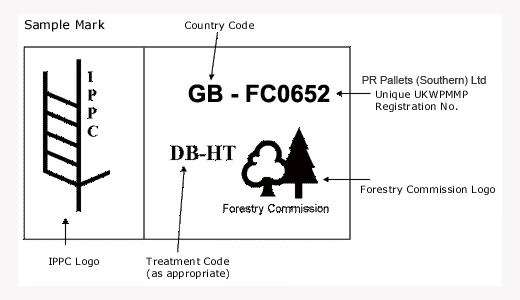
There are two main things to look for on the stamp!
Having identified that a pallet has a stamp, look for the IPPC logo first.

The IPPC stamp: if you don’t see it, use it with caution! A pallet may be perfectly safe without this logo, but you don’t have clear information.

Next, look for the treatment code :

To recap the types of pallet treatment that are safe or dangerous for using as beds or other furniture:
- [HT] = Heat treatment
- [KD] = Kiln Dried
- [DB] = Debarked
- [MB] = Methyl Bromide Treated - TOXIC Pallet wood - AVOID THESE PALLETS FOR REUSE or BURNING
Above are the two most important information to check on the pallet stamp. Then, you have a geo-specific identifier. The first two letters of this identifier will indicate which country the pallet is from (as per ISO 3166), followed by a regional identifier and a unique registration number for the manufacturer.
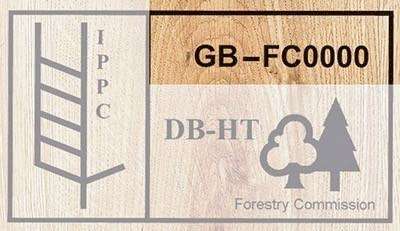
Pallets stamped with just EUR and possibly IPPC also are old - so have more possibility of having been contaminated by the goods that have been sat on them - originally these wooden pallets were used by railways in Europe to move goods - so we would probably avoid any wooden pallets with just this labelling - unless that is it also has the EPAL label (see below).

If you find a European pallet with IPPC - EUR and EPAL stamps on, then double check the IPPC label (as above) to be certain it uses untreated wood, but normally they should only say HT for heat treated making them very suitable for making pallet beds from as they are also designed to carry up to 1500kg or 3300lb!

Are pallets good for making beds & furniture ?
In conclusion - do we feel that reusing pallets for furniture or building with is a good idea? Honestly, we're divided on this one. Some feel that the potential negatives outweigh the positives for reusing pallets - especially for beds and furniture - but also in gardens if in contact with plants and vegetables.
The pluses for reusing pallets to build with:
- It's recycling or upcycling a mundane and naturally derived product
- Pallets can often be found for free
- Pallet wood can have character and a certain rustic charm
- Pallets are sturdy - so can build stuff quickly
- Building from pallets is satisfying!
The minuses for reusing pallets for building beds, furniture etc:
- The wood in pallets can be toxic - very toxic!
- Rough timber may have character, but it also snags bedclothes, clothes, nylons...
- Pallets are recycled, reconditioned and reused constantly - so only really tatty or broken ones should slip out of the system which are not great for building anything out of
- Pallet beds and headboards have been trending for a while, so they're becoming a little "meh..."
- Recycled pallets are generally free - and can look dare we say, a little cheap?
Bottom line, for everyone to decide if they like or hate the aesthetic of using recycled pallets for beds, furniture or building. If you do decide that reusing pallets does it for you, then at least now, armed with the information above, you should be able to find pallets that are safe and non-toxic to do whatever takes your fancy... Enjoy!
Now you know more about which pallets are likely to be safe to build beds & furniture from, learn more about reducing waste, composting, disposing of construction waste and other easy lifestyle changes to reduce your environmental footprint in these pages :
Find more about green home construction in the Ecohome Green Building Guide pages - also, learn more about the benefits of a free Ecohome Network Membership here. |




























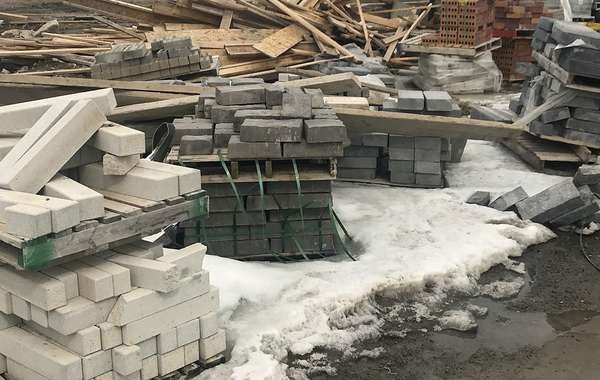



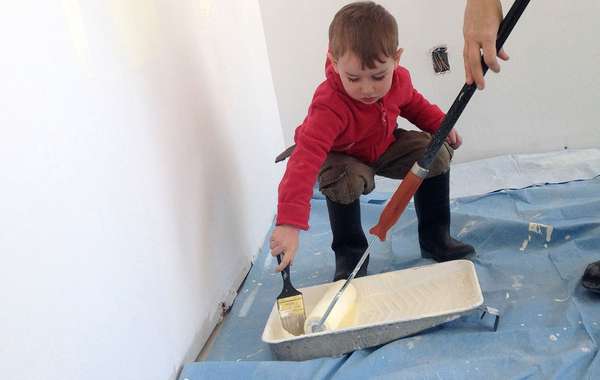
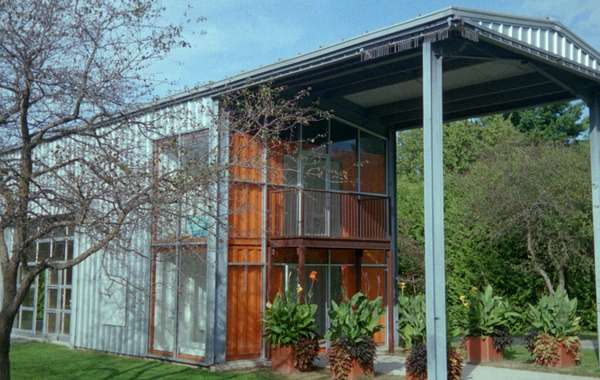

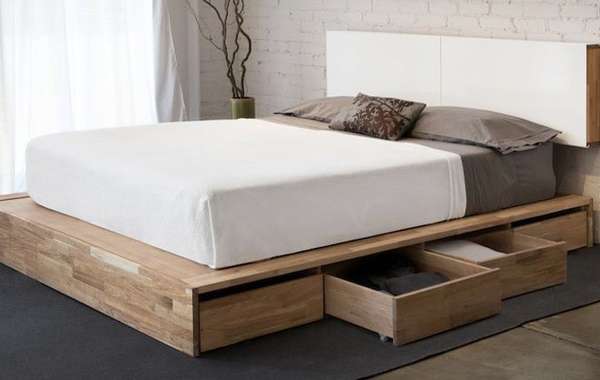

Comments (0)
Sign Up to Comment